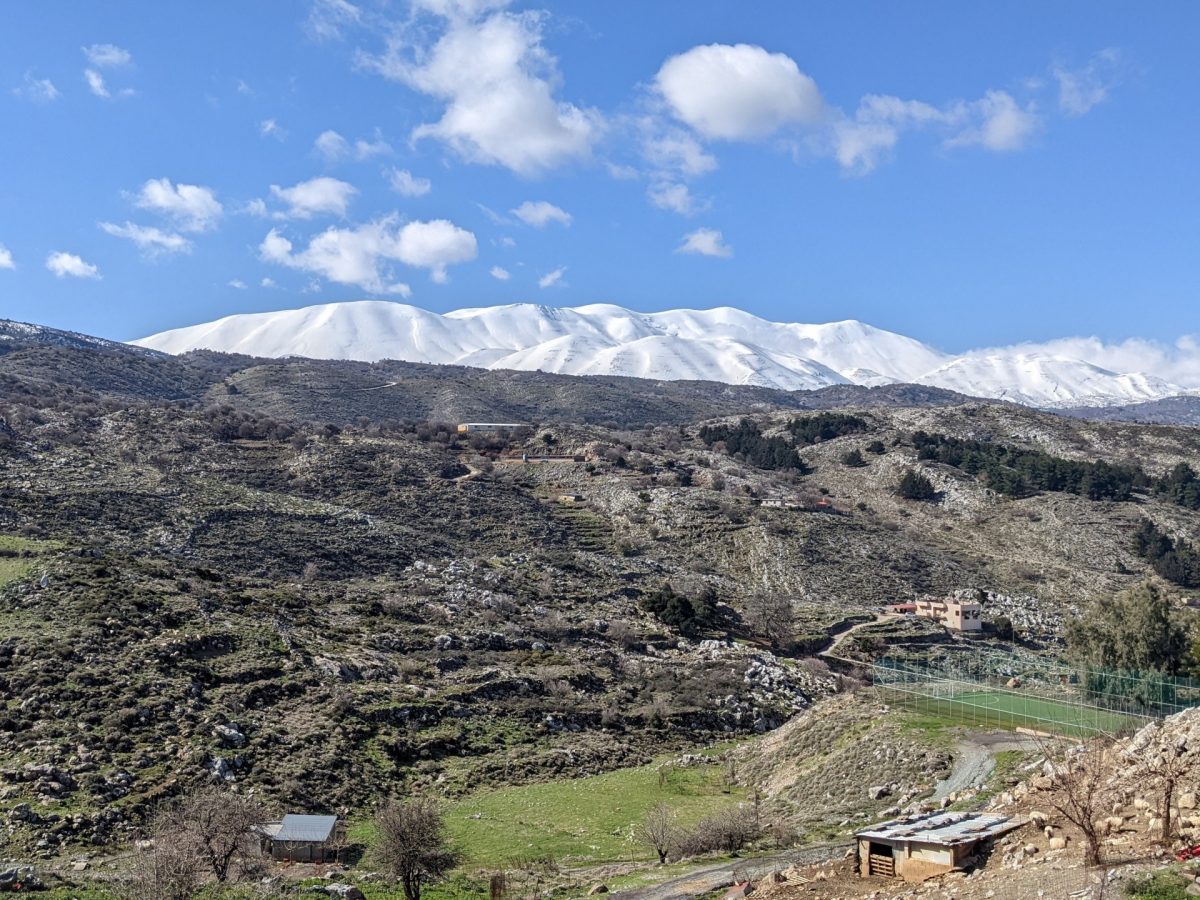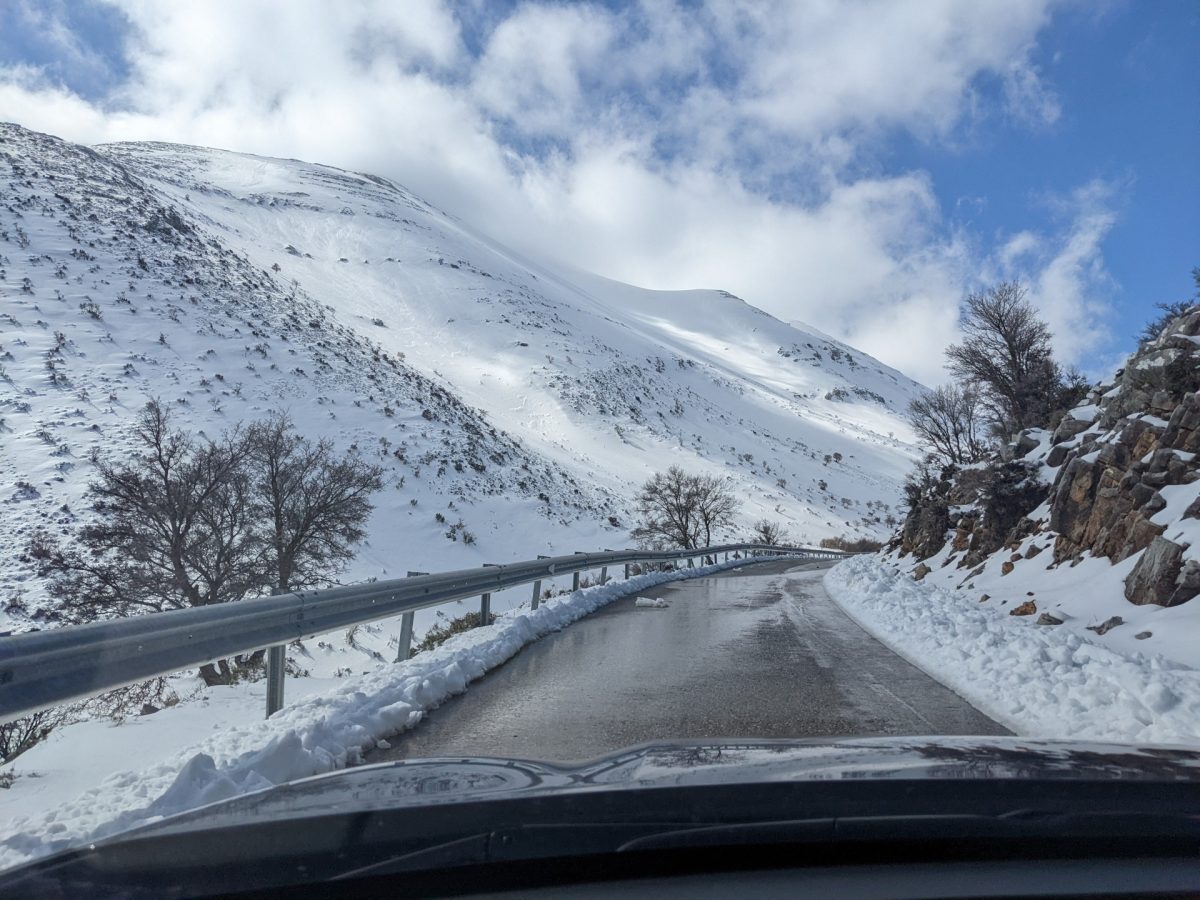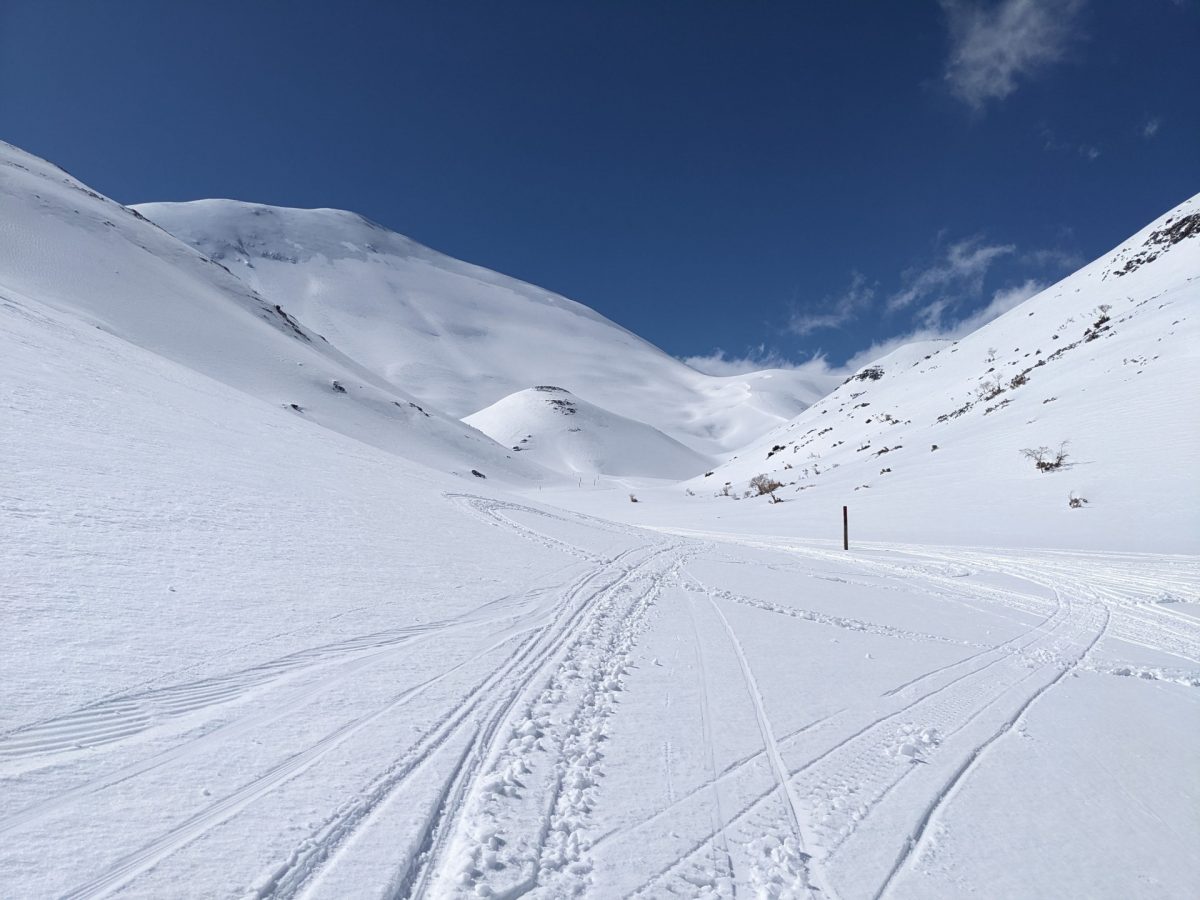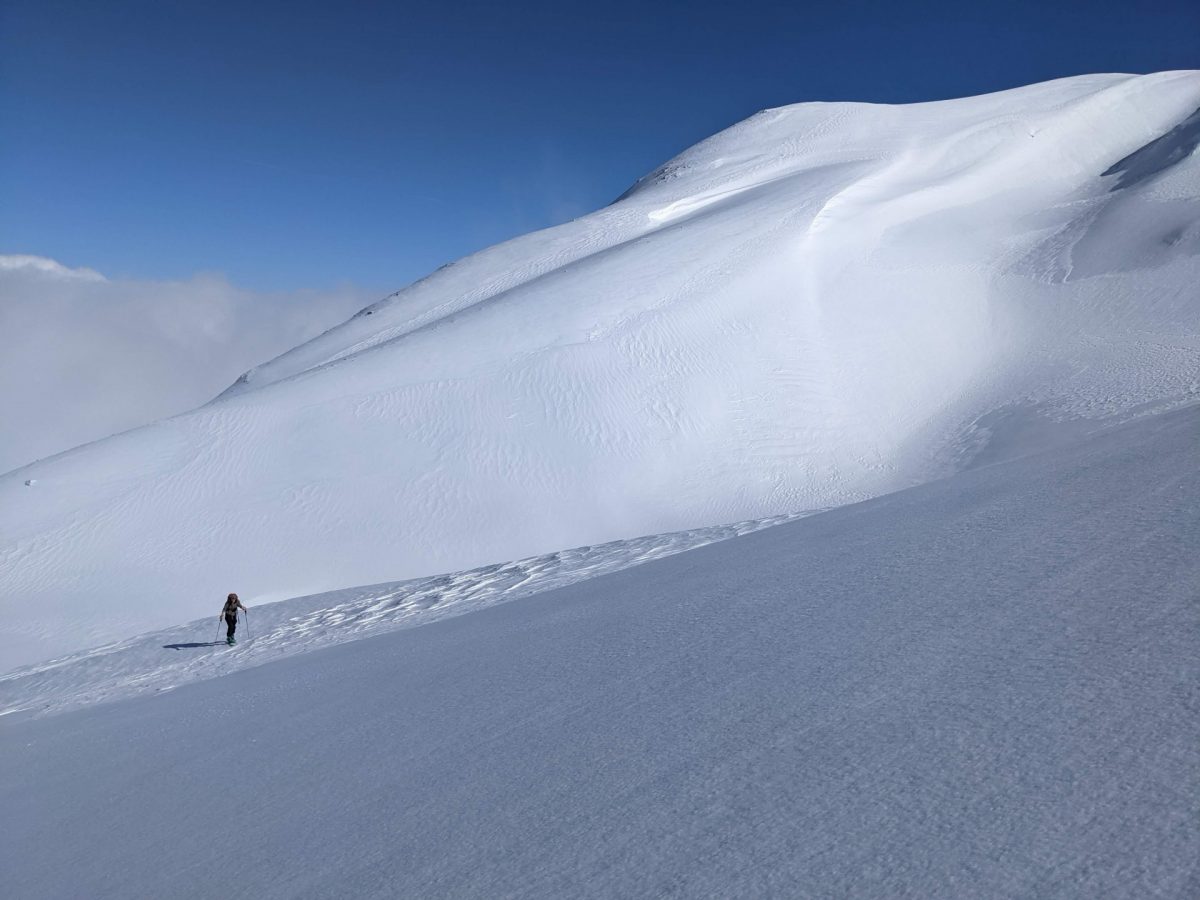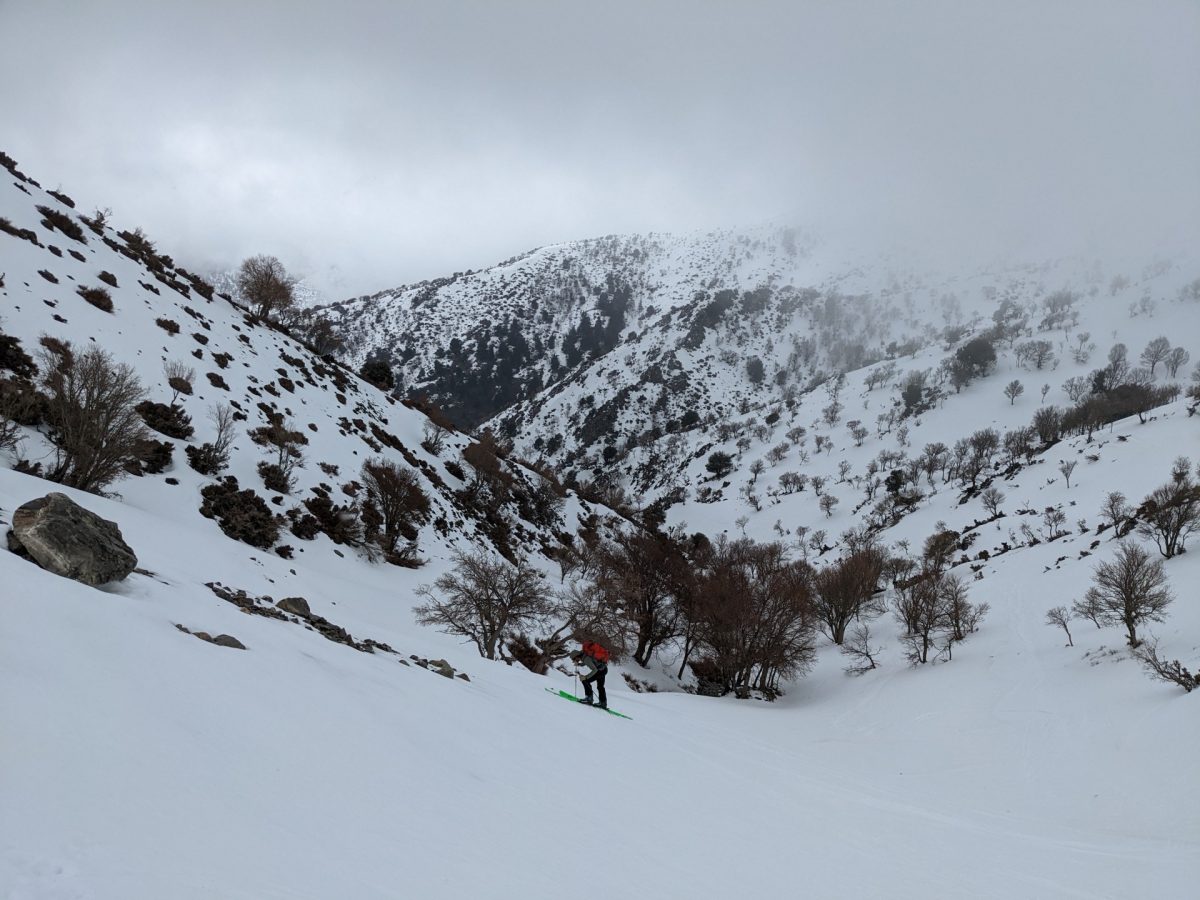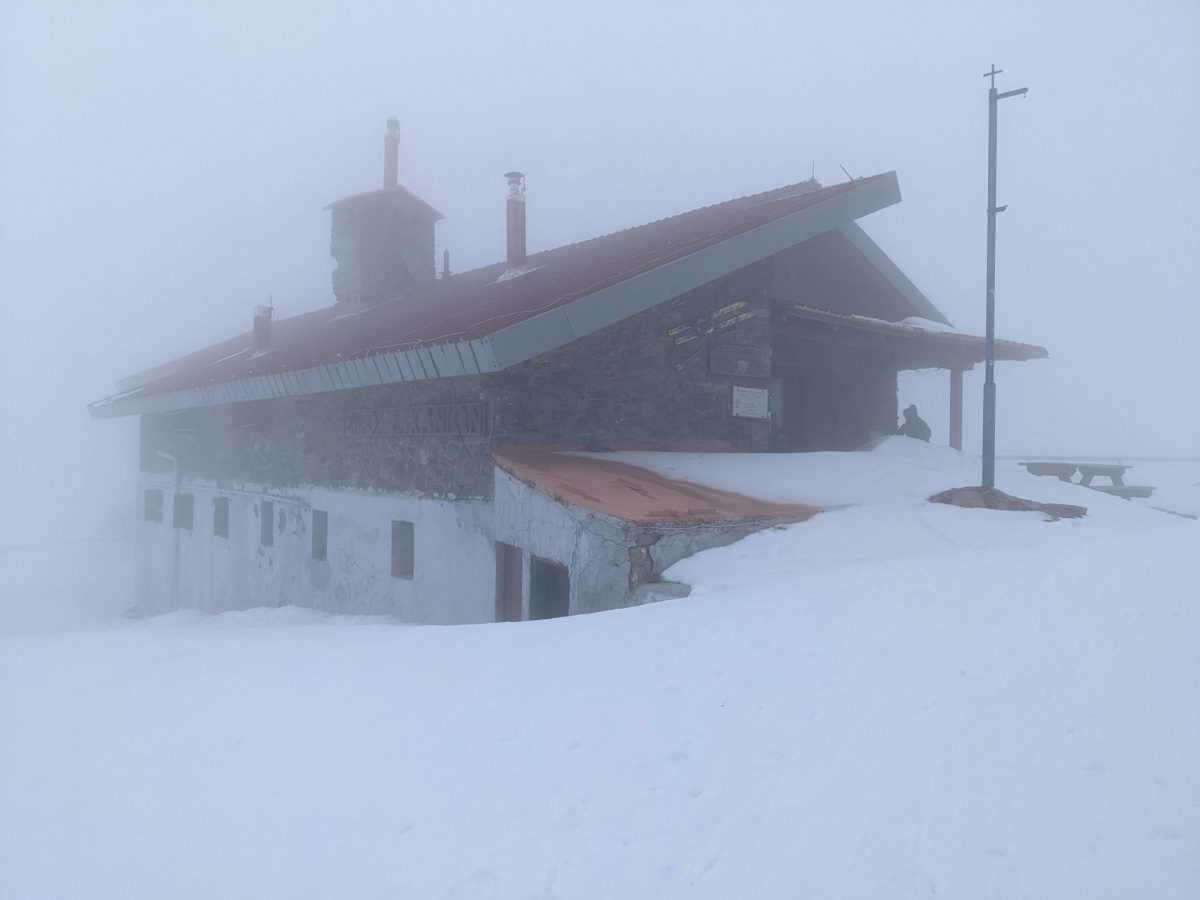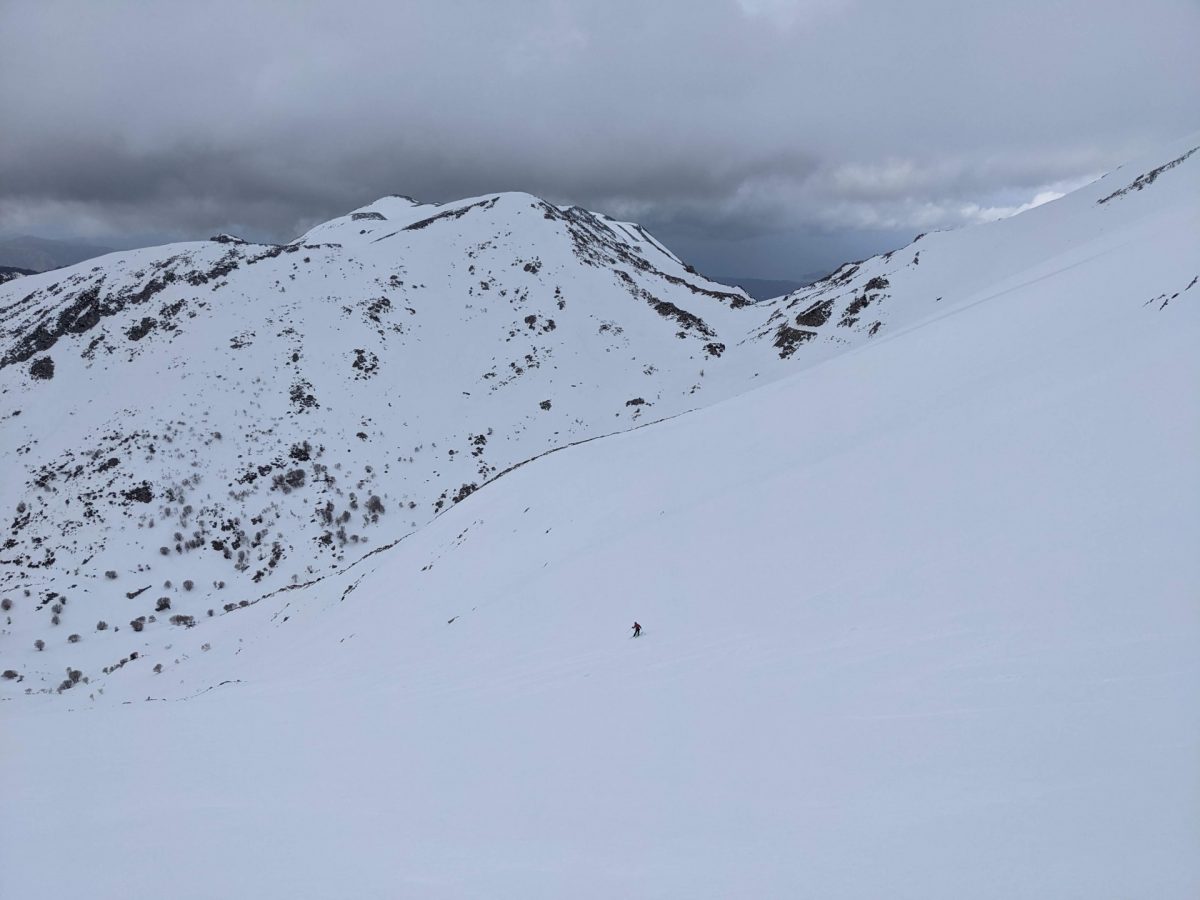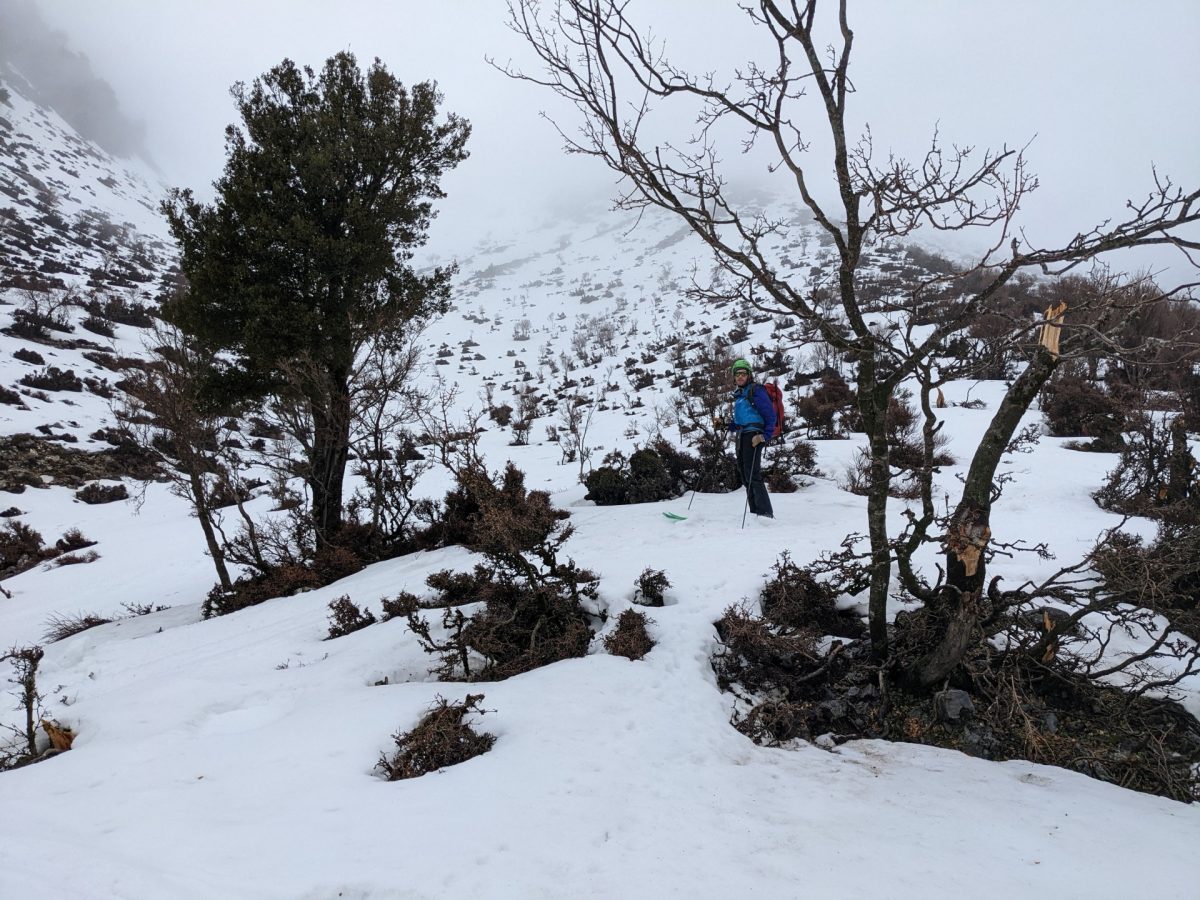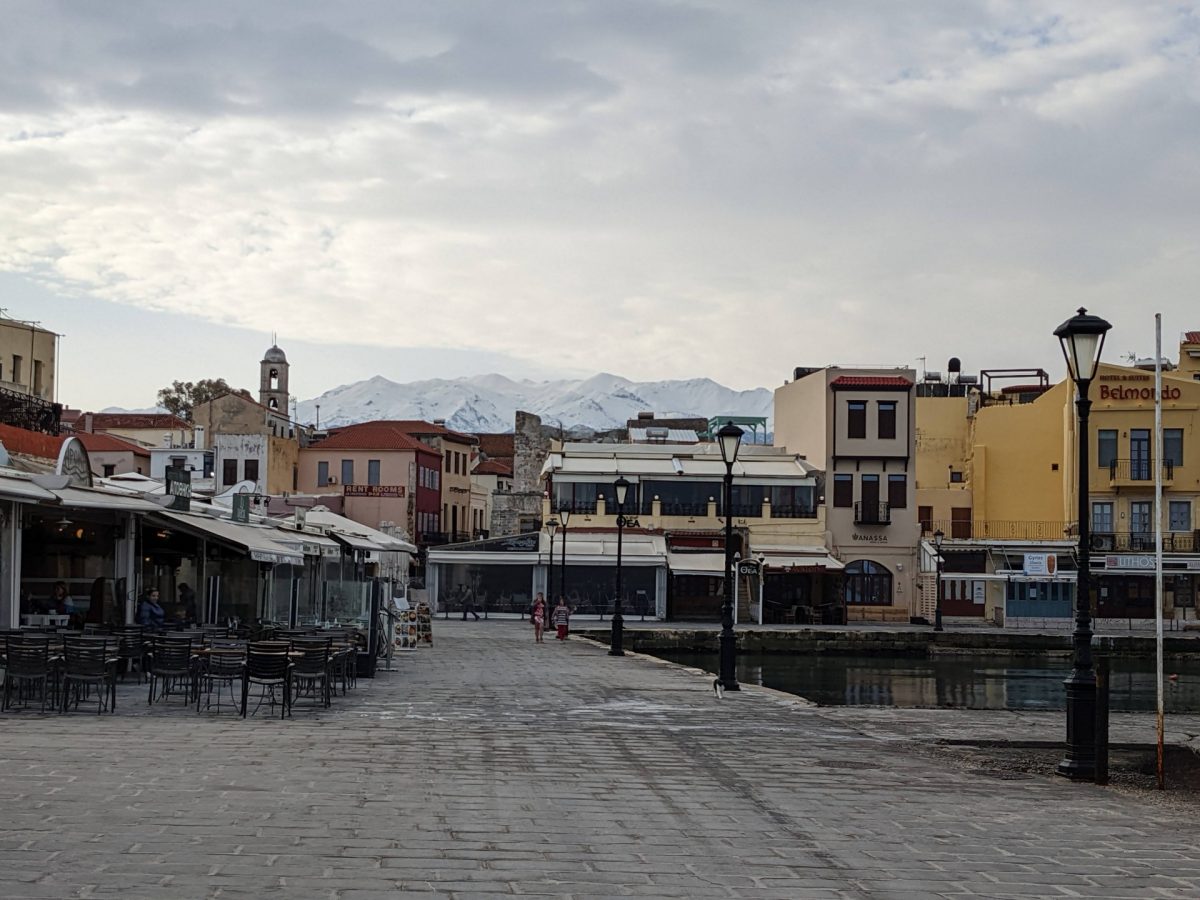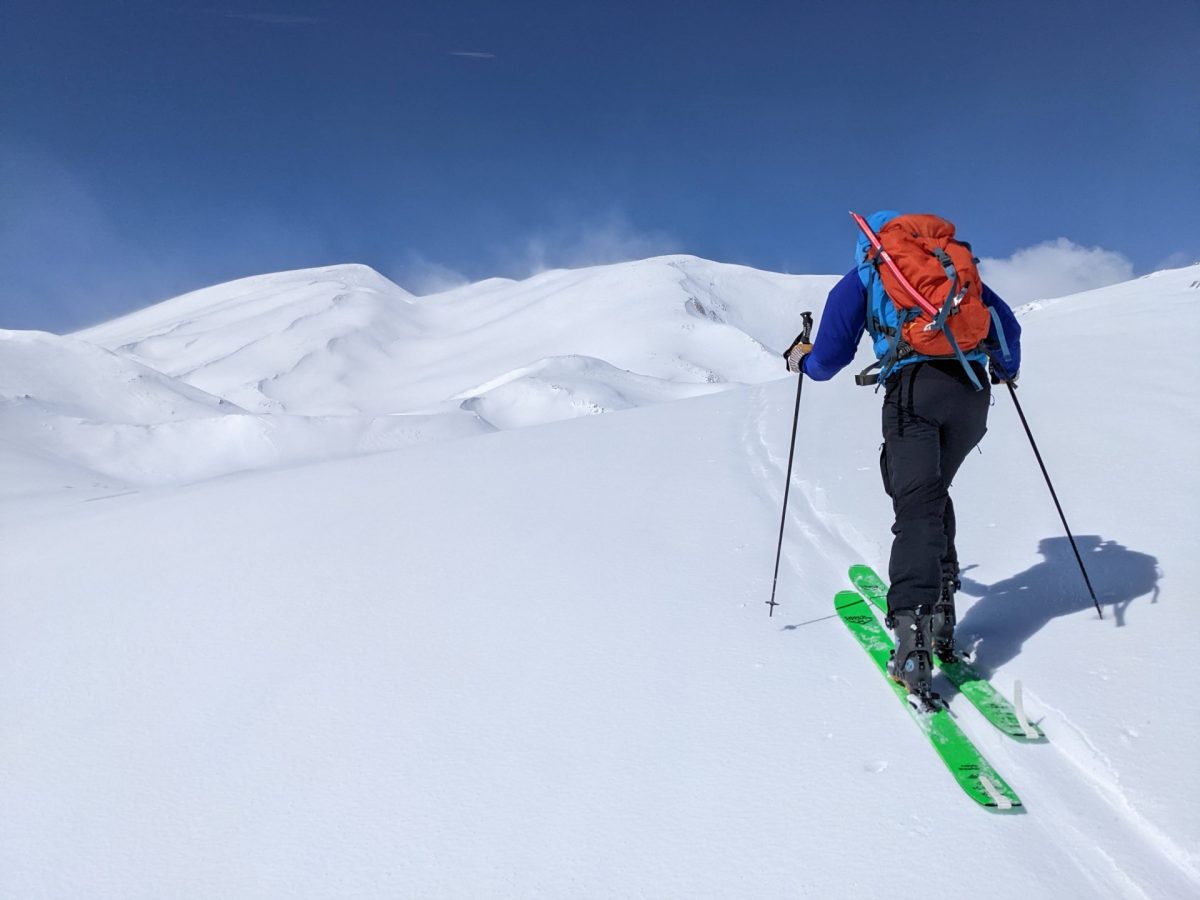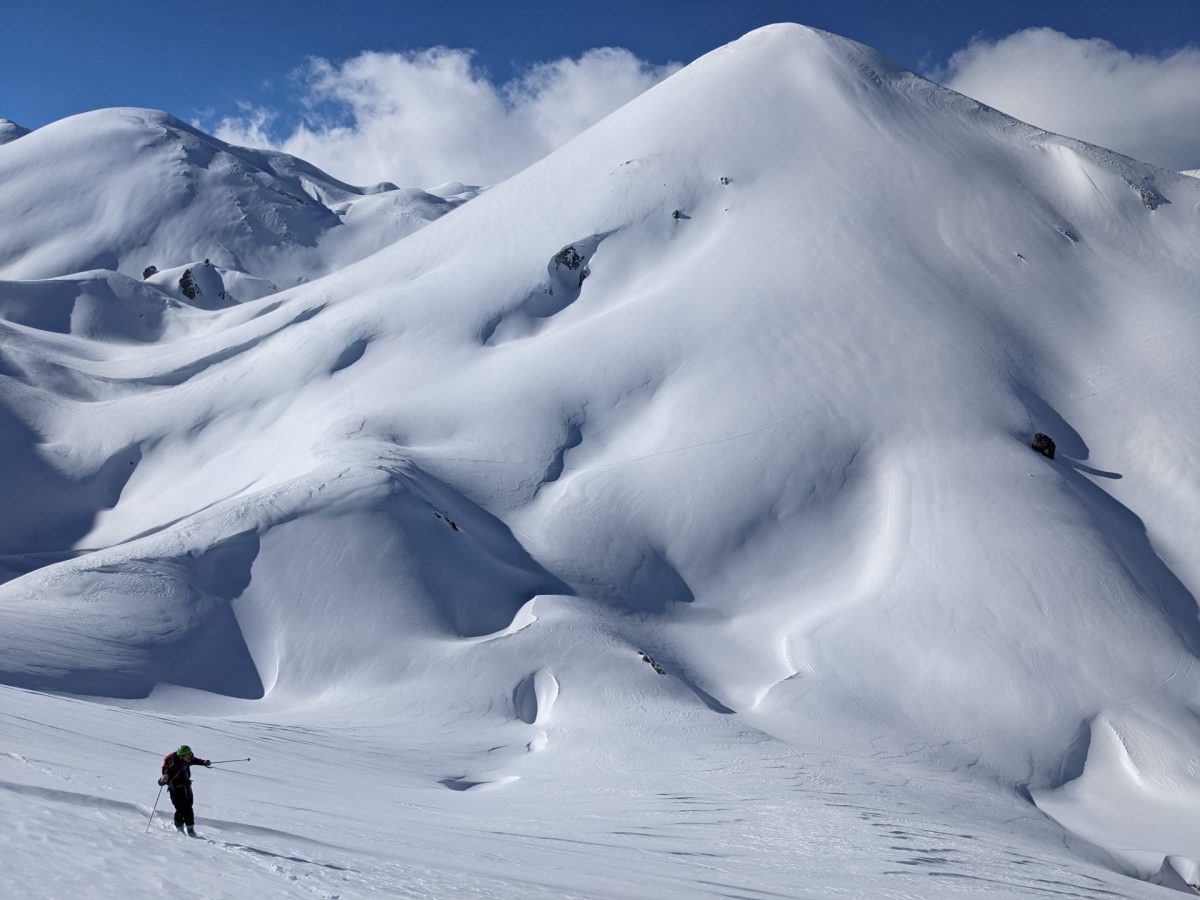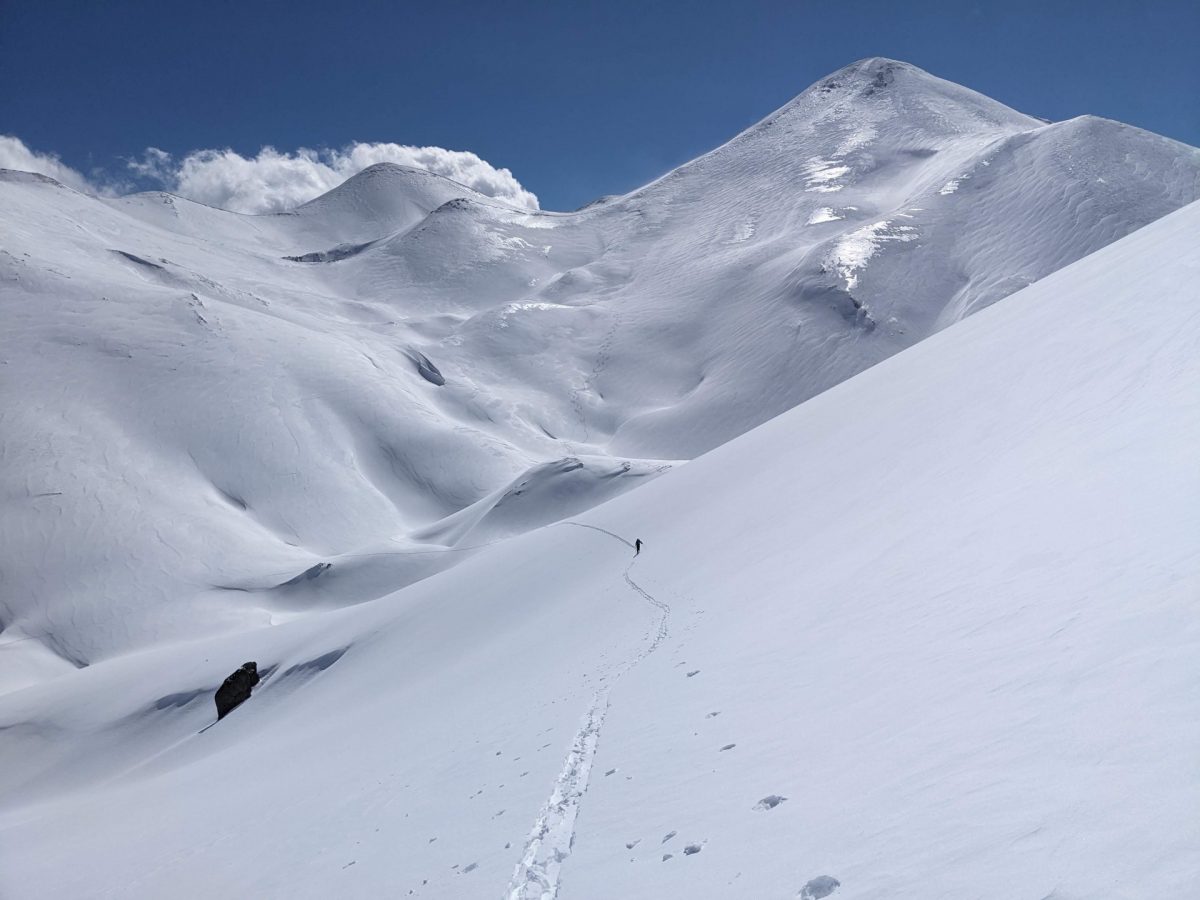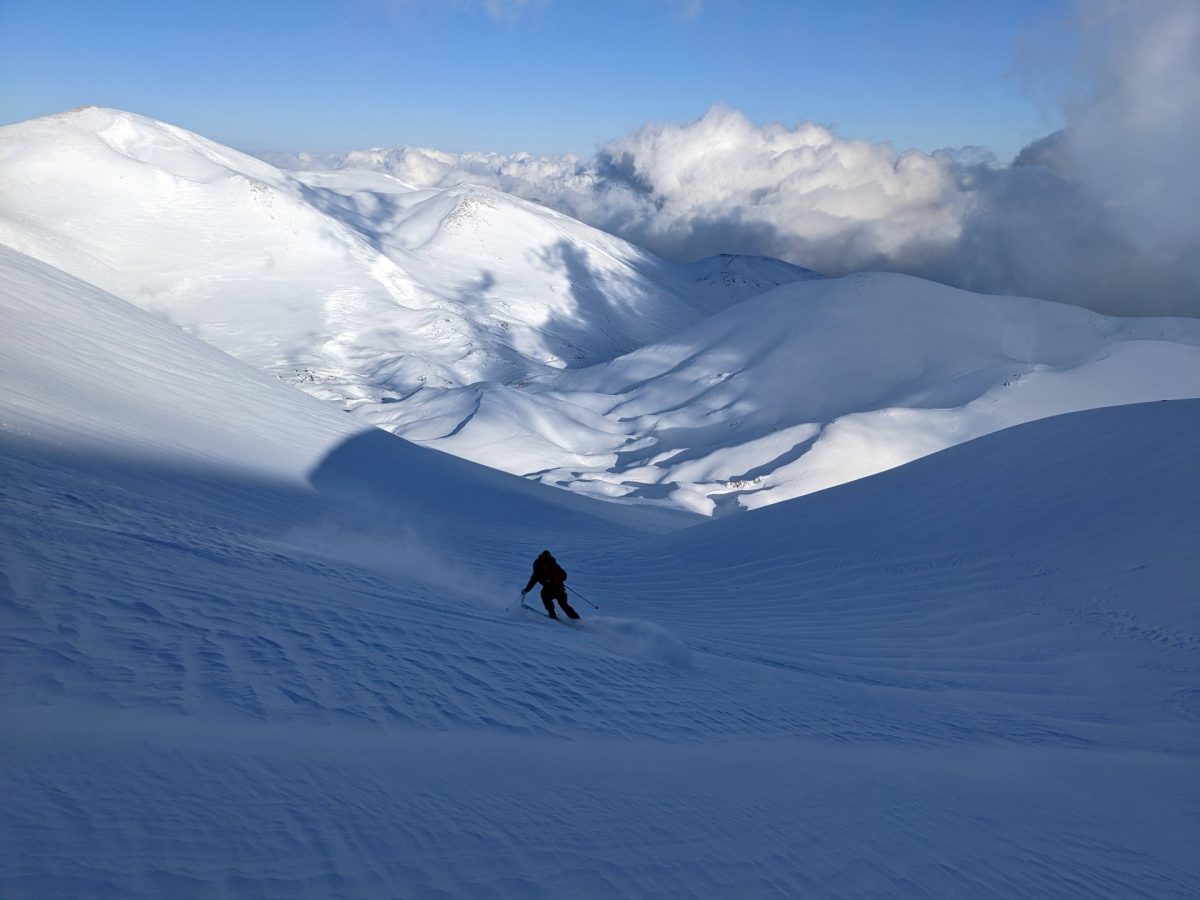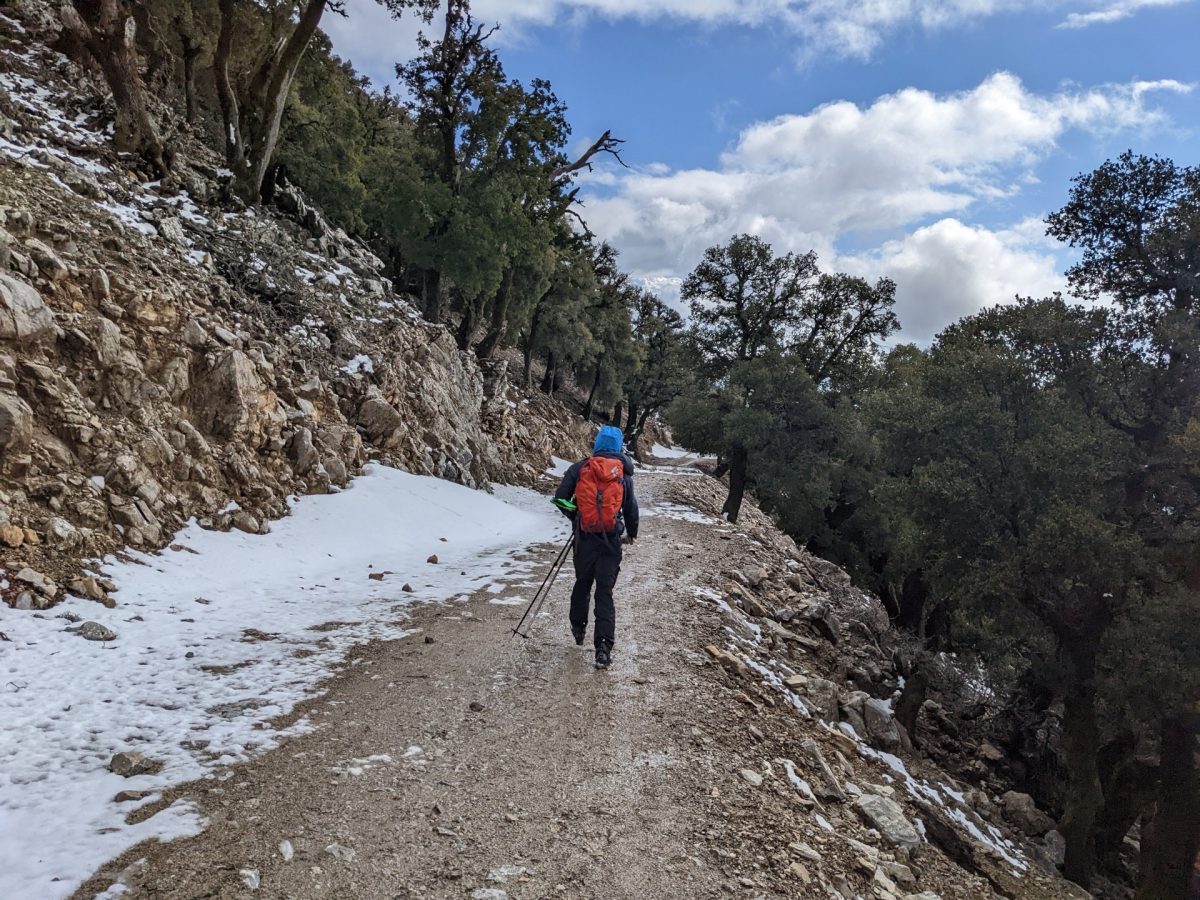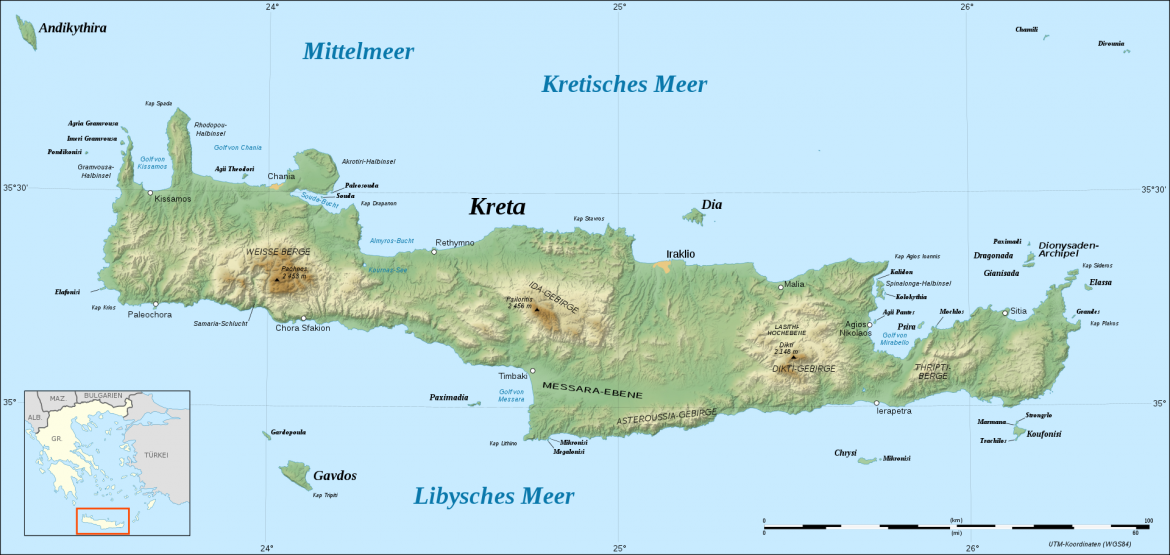The island of Crete offers a cultural legacy and some high terrain. It’s a solid stop for backcountry go-getters looking for Mediterranean turns.
It was a long dark COVID winter. After years of skiing every winter day on hot pow lines and steep skiing all spring, skiing ceased to exist. I had lived for many years in Colorado working in the winter sports industry but had recently made the trek to my new life in the Netherlands. Not Nederland, that town known for the Frozen Dead Guy Fest, but the country known for its cheese and flatness. The Netherlands in English translates to “low country,” as more than half of its land area is below sea level. I was in luck; the town I emigrated to lies in the distant south of the country in the only region where hills spot the countryside, above sea level. My house sits at roughly 50 meters, and my local hill called “The Observant” in Dutch reaches a stunning altitude of 177 meters and reigns as the 5th highest point in the country.
Right before March 2020 struck, I took my first Euro-skication with my mentor and long-time ski touring partner, Alex. At 19, on my first ski tour, Alex shepherded me on Cameron Pass’ Diamond Peak while I was attending college in Fort Collins.
Back to the skication: we headed to a hut-to-hut trip in the Silvretta Alps (inspired partly by some early WildSnow blogs) with all the glamor and glitz of an Austrian-style ski holiday. Beer flowed from taps at 11k feet on the glacier and apple strudel servings as far as the eye could see. This trip was marked by bad weather and generally hot snow, except for two powder days toward the end. This was also the start of the end of life as we knew it and a 1.5-year ski drought for me.
After leaving Austria, I returned home to the “low country.” We didn’t experience a lockdown, we could move about, but everyday life ceased. The nearby Belgian border, which usually pops up somewhere on my morning runs, closed. With not much else to do, the funky jig-jagged southern Netherlands dividing line was my playground. I trail ran and biked the entirety of the “heuvelland” or hill country and was generally happy, but I missed the snow and real mountains. The nearby indoor ski centrum Snow World closed, and even it if was open, it was not doing it for me.
Eventually, Alex and I knew it was time to get back at it. We spoke in late 2021 about a new adventure as international travel opened back up. We wanted to ski someplace unique, where the snow might not be blower powder but somewhere that would be totally out of this world for us, someplace unfamiliar not only culturally but also geographically. Then came a hint. This past January, The New York Times published an article on Crete’s backcountry skiing. Crete is Greece’s largest and most southern island.
Mention skiing in Crete to most people; they stare crosse-eyed and maybe ask how it’s even possible that it snows there. The NYT article cast a hook with the title, “The ‘best Spring Skiing Anywhere’? Try Crete.”
The best! Evidently, Crete is in that conversation. The hook set.
Crete
There wasn’t much info online, and we were hesitant to lock in by hiring a guide. We checked snow coverage online and read it is consistently snowy up high. There was nothing to lose. Whiffing on turns meant We thought, “What do we have to lose?” We will dip our toes in the Mediterranean if it’s not skiable.
Skipping the step of the dialed-in itinerary, we rolled the dice with this strategy: be in the right place at the right time and get local beta!
Only two nights booked at a hut were confirmed. As we understood from the hut operator, the hut may or may not be open; it depended on how the hut manager felt.
The first morning awoke, loaded up on Greek coffee, feta, and spinach pies, and set off to pick up our rental car, a necessity to gain access to the remote terrain on the island. Although I live in Europe, I don’t have a car or a European license. Neither of us knows how to drive a stick very well. Our rental car reservation wouldn’t take our Colorado driver’s licenses, so we went to Hertz; they set us up with a little Kia Stonic, a hatchback that we assumed was AWD. (However, we later discovered it was not.) We then headed towards the highest peak on the island, Psiloritis.
Psiloritis sits high above the island’s center, a gradual massif flanks either side. Upon landing, we could see Psiloritis dominating the horizon, seeming out of this world. Next to these sandy Mediterranean beaches, there were peaks caked in snow and ice.
We drove to the highest point we could access on the island’s north side and eventually hit snow and a closed road. We found a few skiers and mostly snowmobilers, complete with an Apres ski Gyros food truck and raki (the Balkan drink of choice) bar. Doing what we do, we began skinning to within a couple of hundred meters of the summit before finding the bulletproof death ice that marks the top of Cretes’ mountains until late spring. I hadn’t been on skis for a while and was gripped.
The first turns of the ski down were scrappy, but then we found it, that magical corn snow noted in the NYT article. We became believers. Sufficient wind, altitude, and cold nights keep a constant cycle of soft wet pow, turning to corn snow on the mountain. The corn lasts late in the day and early evening before it refreezes. For us, from two thousand meters above the Mediterranean and below — all corn. That amounts to about 300 meters below the summit to the Gyros truck.
Before departing, we enjoyed a late afternoon raki, where they were blasting Dancing Zorbas. (You might remember the name if you saw the early 2000s rom-com My Big Fat Greek Wedding.) If it’s unclear, this is not the land of charcuterie and beer steins.
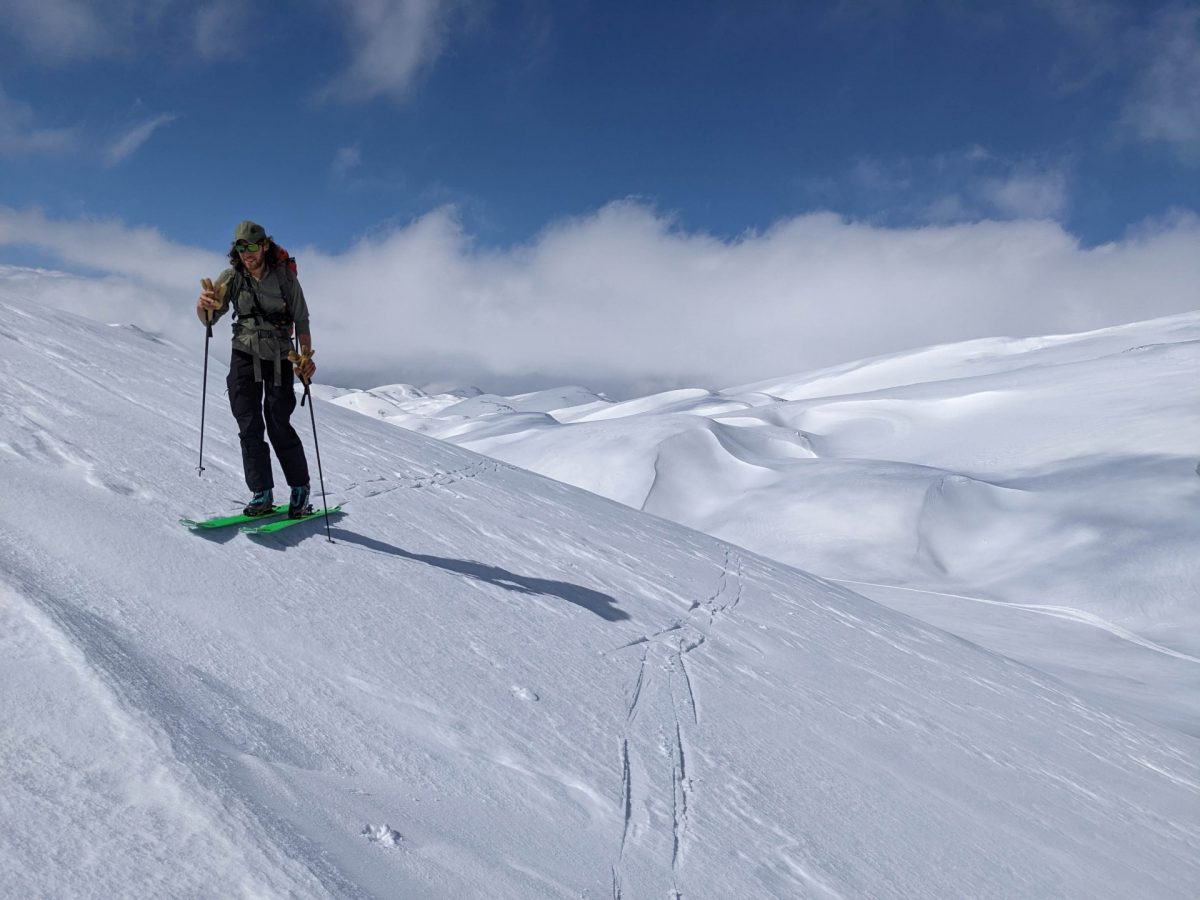
Side hilling was very common on this terrain. In Crete you roll with the flow of the icy snow and Raki. Bring ski crampons. Photo: Alex Neal
From Psiloritis to Omalos
The following day, we arrived in a small mountain village of Omalos as it was fully socked in with cloud cover. We coincidently met the hut operator, Christos, who we had been texting, at the trailhead. Remember the hut — the may or may not be open hut? We learned that he wasn’t the best at giving directions. When Alex asked for directions to the hut, the response was verbally efficient; he said, “Just drive up the dirty road and go ski with the others over in that drainage.”
“Up the dirty road,” was our first lesson in local directions. We wondered if Christos also meant that it was possible to climb to the hut via this route. Picking our way through cabled fencing and cherry blossoms, I imagined this is how Japan looks, but lacking the iconic powder. This Cretian version will now be dubbed Cretepow.
At a certain point, we moved above the timberline. We had some idea we could connect a very long ridge to the hut, but we overestimated the steepness and length of this ridge. In blasting wind and low-vis, we found the hut, built by the Hellenic mountain association in the 1970s. This was no yurt. It had around 40 beds, a full-service kitchen, and bathrooms with running water.
Christos and his wife are the chefs and hut keepers; they only open on certain weekends when enough guests book to make it worthwhile. We were endearingly called “the American guys,” by everyone at the hut. There was a loud and large group of Italians and an older group from France accompanied by mountain guides from Courmayeur and Chamonix. The French guide struck us because you could tell he had spent some serious time in the mountains. He would smoke a cigarette every hour; to Americans, this seems paradoxical but is not uncommon in Europe. It was the guide’s first time here too, and he seemed to develop an affinity for our route finding.
Rise and shine — we picked our way across to a massif, crossed a ridge, skittered up a valley, bushwacked, all at the recommendation of Christos, to a spot that offered turns. Our hut mates seemed to like our choice, so they followed. We eventually skinned the ridge and scored some fast corn snow turn for around 2200 vertical feet to the runout. Multiple long laps later, this was a big day back on skis with great turns, but I was tired.
The skiing was inspired; our Colorado-style trail snacks, not so much. The Italians hauled an entire leg of Serrano ham, bottles of wine, cheese, and lunch items. Take the European hint, do as they do. The packaged sports bars can remain at home.
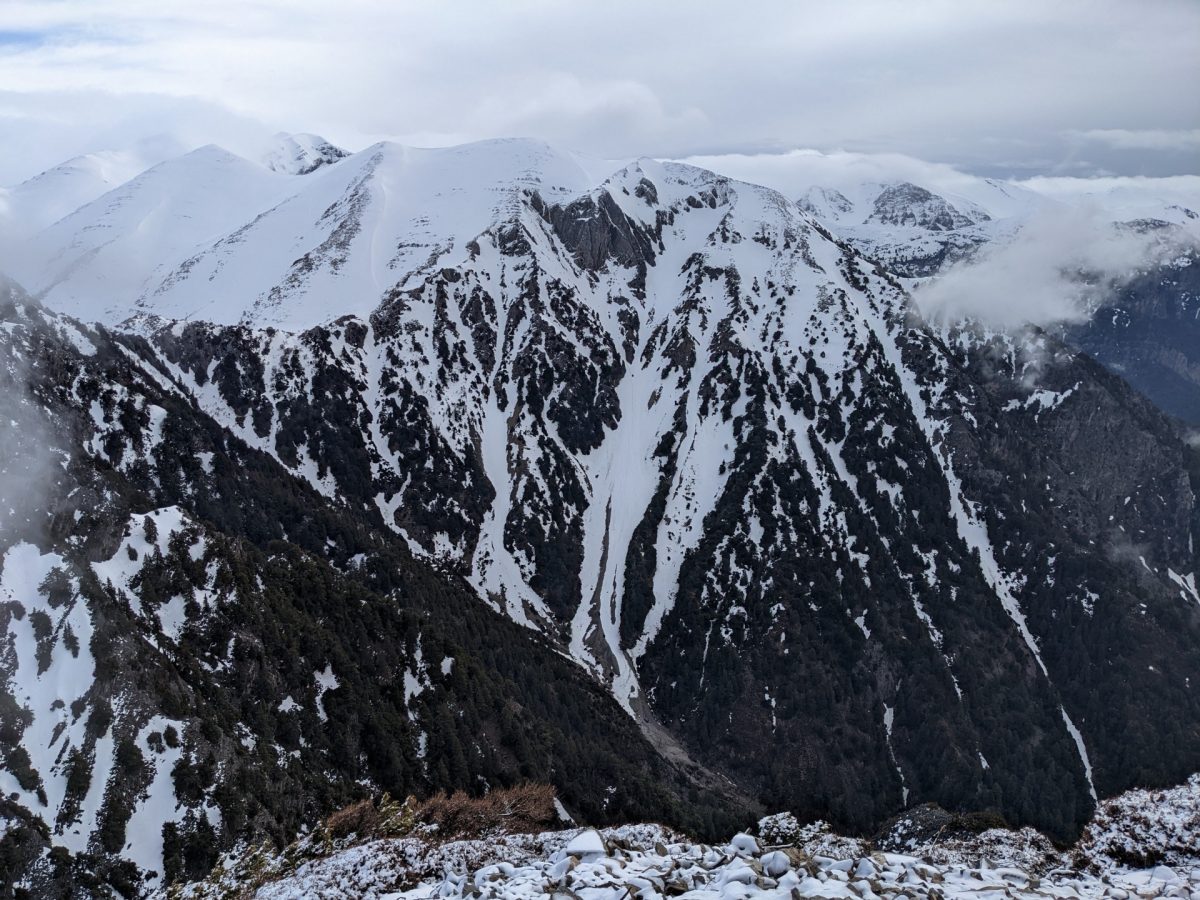
The Western Range or The Lefka Ori, has a unique vibe. The first ridge on the left is the route we ascended. Photo Credit: Alex Neal
Cretian-cement fell from the sky on day four. The ski inspiration drained away. We decided to try our luck on the other side of the White Mountains, or “Lefka Ori,” in Greek. Christos graciously scored us a room on the other side of the range in a remote part of the island.
We arrived at our new base on the south side of the island. For around 30 Euros each, we had a comfy room, a massive traditional dinner, and breakfast — the ingredients were picked fresh and seasonal. We had a simple existence. One moment we were on peaks, the next channeling our inner Anthony Bourdain trying the house specialty, rabbit. The best part about this area of Crete was few tourists other than skiers. The pace was slow and likely reminiscent of long-gone Crete, as it remains a shepherding region.
After a massive helping of Greek yogurt and some fried eggs the following day, we began our ascent into the south side of the Lefka Ori. We made the slog up the road into the range. We didn’t plan for the day but thought we’d try to get to the summit of Pachnes, the high point, which sits at 2,453 meters, only 3 meters lower than the island’s highest peak. It was epically far.
Pachnes lay in the center of the range, so we made our way up the valley, eventually descending more and going up a peak that looked like a blank white canvas, begging for our signatures. The new snow was heavy on this aspect but skied well. We later ascended to the other side of the valley, hoping to connect a new line and ski back to our car. This line was probably the best of the trip. It had 3k of cruiser feet and a corn harvest to its terminus.
After that line, I remembered exactly why I am stoked about skiing: It’s aesthetic and sublime. I felt as if I was riding the mountains into the Libyan sea. In the early evening, walking down the road to our car, we were joined and entertained by an Austrian skier. He told us of ski adventures in Kyrgyzstan, Morocco, Japan, Norway, and Iran. My brain began cataloging future ski trips.
Return to Psiloritis
We wanted to spend another day skiing the Psiloritis (central) range and reach the island’s high point, which we were short of on day one. We read about a few people’s attempts from the south side and made plans.
We found a place to crash for the night on the sea, where we enjoyed fresh seabass and lamb. Winter in Crete is calm and empty, so there are always friendly locals, places to stay, and hot meals waiting. We adopted the strategy a few nights of pulling up at a taverna and asking if they had an available room, which is a great way to meet locals. And most main roads are paved, but you have to get off the beaten path to access the mountains. We never quite knew how far the road would lead to the conditions we were seeking, but Alex did a superb job navigating the roads, which never had a clear end or beginning.
On our return trip to Psiloritis, we skinned 1k vertical feet up the valley before strapping our skis to our packs to make our way up the south face — there was more low visibility. This was a slog of many thousand vertical feet to the 8k-foot summit. We still couldn’t see and eventually bumbled towards the summit. From the top, we made numerous corn turns in vertigo-inducing clouds wending our way back down to a closed hut to rest and snack on spinach pies. I was exhausted. Alex was used to pushing out 10k foot days in the Rockies, but I hadn’t been on skis much in years, so he could always go for more and mostly left me in the dust. I was thankful for his patience.
After our descent from the island’s high point, we set off back to the island’s north side, blasting Cretian music all the way down in the Kia.
Crete was an unbelievable destination for those looking to ski on the most southern point of Europe, high above the seas, and to experience Greek hospitality and culture. Here are some lessons we learned:
—Even in mid-winter, you don’t need many layers; some days, we were happily skiing at 2200 meters in t-shirts.
—Not having a plan led to some excellent turns and great friendships.
—In winter, cucumbers are out of season
In winter, Crete is empty, so there is no need to book accommodations in advance except for the hut access terrain or if you plan on staying in the mountain villages to access the range. You can camp even on the beach; it’s warm enough on most nights. Alex won’t want me to give away too many of our secrets. He even tagged his Insta post with the acropolis in Athens… but I will generally say once you get high enough in the central and western ranges, you can see a lot of the terrain and can pick good lines. There are not too many terrain traps and an abundance of open canvas to leave your ephemeral mark.
—Enjoy the spontaneity of Greece. There isn’t always good information available or set routes to follow, but this is what makes it fun!
—Explore the gorges, culture, and beaches of Crete. I regret not doing this more; the island has a ton to offer.
—Don’t stay or eat in Heraklion or Chania. The smaller villages offer unique experiences with the tastiest food. Stay in a guest house to have the real Cretan experience.
—For the ski-mo inclined, Crete hosts Europe’s most southern race, the Pierra Creta. We missed this by a day due to poor planning, but it could be worth the trip.
Andrew is a former outdoor industry enthusiast who developed a love for backcountry skiing when he realized the ski area was too far from his college town. In 2018 he traded his full time mountain life from Colorado’s Elk Mountains to the south of the Netherlands where he works as a lecturer at Maastricht University. He remains a passionate backcountry skier and mountaineer who has enjoyed summits in the Rocky Mountain West, Canada, the Alps, Andes, and Caucuses.


